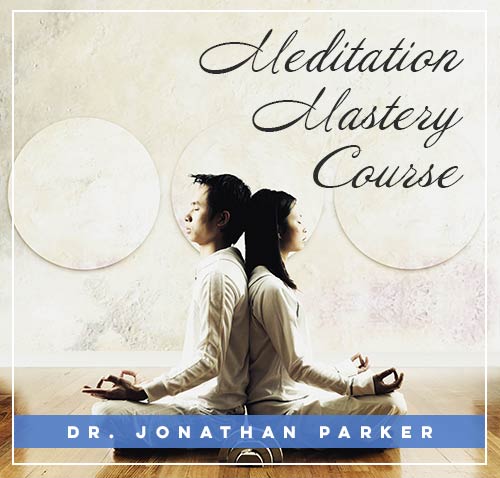Mindfulness of Breath: Techniques

Looking for more amazing products? Check out our online store and explore our collection here! Happy shopping!
Before diving in, please note: This post is for informational purposes only. If you’d like to know more about how we approach topics, feel free to check out our friendly Disclaimer Page.
Hey there, amazing readers! 
We’re committed to delivering quality posts, and your support (even just sticking around despite the ads) means everything to us. So, bear with us, and thanks for helping us keep the good vibes rolling. Now, on to the fun stuff!
TRANSLATE BUTTON AT THE END OF THE ARTICLE
A Quick Overview
Mindfulness of breath is a powerful practice that involves focusing on your breathing to cultivate awareness and presence in the moment.
By paying attention to the breath, you can train your mind to be more focused, calm, and centered.
This practice has numerous benefits, including reducing stress, improving concentration, and promoting emotional well-being.
In this article, we will explore various techniques to help you develop mindfulness of breath and incorporate it into your daily life.
Introduction to Mindfulness of Breath
Mindfulness of breath is a fundamental meditation practice that involves bringing your attention to the sensations of breathing.
The breath serves as an anchor for your awareness, allowing you to stay grounded in the present moment.
By observing the breath without judgment, you can cultivate a sense of inner peace and clarity.
This practice is rooted in ancient Buddhist traditions but has gained popularity in modern mindfulness programs due to its effectiveness in promoting overall well-being.
Benefits of Mindfulness of Breath
The practice of mindfulness of breath offers a wide range of benefits for both the mind and body.
By developing a deeper awareness of your breath, you can reduce stress and anxiety, improve your concentration and focus, and enhance your emotional regulation.
Regular practice of mindfulness of breath has been linked to lower blood pressure, improved immune function, and better sleep quality.
Additionally, mindfulness of breath can help you cultivate self-compassion and resilience in the face of life’s challenges.
Setting the Stage for Practice
Before you begin your mindfulness of breath practice, it is essential to create a conducive environment that is free from distractions.
Find a quiet space where you can sit comfortably for the duration of your practice.
You may choose to use a cushion or chair to support your posture.
Dimming the lights and playing soft, soothing music can also help create a peaceful atmosphere.
Set aside a specific time each day for your practice to establish a routine.
Finding a Comfortable Posture
When practicing mindfulness of breath, it is crucial to find a posture that allows you to be both alert and relaxed.
Sit with your back straight but not rigid, and your hands resting comfortably in your lap or on your knees.
You can sit cross-legged on a cushion or use a chair with your feet flat on the floor.
Close your eyes or gaze softly ahead, whichever feels more comfortable for you.
The goal is to find a posture that supports your practice without causing any discomfort.
Techniques for Focusing on Breath
There are several techniques you can use to focus on your breath during mindfulness practice.
One common method is to bring your attention to the sensation of the breath entering and leaving your nostrils.
You can also focus on the rise and fall of your chest or abdomen as you breathe.
Some practitioners find it helpful to silently repeat a mantra or phrase with each inhale and exhale, such as "in, out" or "calm, ease." Experiment with different techniques to see which one resonates with you the most.
Counting Breath Technique
The counting breath technique is a simple yet effective way to enhance your focus during mindfulness of breath practice.
As you breathe in, silently count "one" in your mind, and as you breathe out, count "two." Continue counting up to ten breaths, then start again from one.
If you lose track of your count, simply return to one without judgment.
This technique can help anchor your attention to the breath and prevent your mind from wandering.
Noting Thoughts and Emotions
During your mindfulness of breath practice, you may notice thoughts, emotions, or sensations arising in your awareness.
Rather than getting caught up in these mental phenomena, try to observe them non-judgmentally.
You can mentally note them as "thinking," "feeling," or "sensing," and then gently redirect your attention back to the breath.
This practice of noting can help you develop a greater sense of detachment from your thoughts and emotions, allowing you to stay present in the moment.
Dealing with Distractions
It is natural for distractions to arise during mindfulness of breath practice.
When you notice your mind wandering or becoming preoccupied with thoughts, gently acknowledge the distraction without judgment.
Then, refocus your attention on the breath.
You can also use distractions as an opportunity to practice mindfulness by observing them as they come and go.
Remember that the goal is not to eliminate distractions entirely but to cultivate a sense of awareness and acceptance towards them.
Deepening Your Breath Awareness
As you continue to practice mindfulness of breath, you may find that your awareness of the breath deepens over time.
Pay attention to the subtle sensations of the breath, such as its temperature, texture, and rhythm.
Notice how the breath flows effortlessly in and out of your body, connecting you to the present moment.
By deepening your breath awareness, you can cultivate a profound sense of inner peace and stillness.
Practicing Mindfulness Regularly
Consistency is key when it comes to developing mindfulness of breath.
Set aside time each day to engage in formal mindfulness practice, even if it’s just for a few minutes.
As you build a regular practice, you will start to notice the benefits spilling over into other areas of your life.
Mindfulness is a skill that requires ongoing cultivation, so be patient with yourself as you navigate the ups and downs of the practice.
Incorporating Mindfulness into Daily Life
Mindfulness of breath is not limited to formal meditation sessions; you can also incorporate it into your daily activities.
Take moments throughout the day to pause and bring your attention to your breath.
Whether you’re walking, eating, or working, you can use the breath as an anchor to stay present and focused.
By integrating mindfulness into your daily life, you can cultivate a greater sense of awareness and appreciation for the present moment.
Seeking Guidance from Meditation Experts
If you’re new to mindfulness of breath or struggling with your practice, consider seeking guidance from meditation experts or teachers.
They can offer valuable insights, techniques, and support to help deepen your practice.
Joining a meditation group or attending retreats can also provide a sense of community and accountability.
Remember that mindfulness is a journey, and it’s okay to seek guidance and support along the way.
Conclusion
In conclusion, mindfulness of breath is a powerful practice that can help you cultivate awareness, presence, and inner peace.
By focusing on your breath, you can reduce stress, improve concentration, and enhance your overall well-being.
Through techniques such as counting breaths, noting thoughts, and deepening breath awareness, you can develop a more profound connection to the present moment.
Remember to practice mindfulness regularly and incorporate it into your daily life to experience the full benefits of this transformative practice.
Whether you’re a beginner or an experienced practitioner, mindfulness of breath offers a pathway to a more mindful and fulfilling life.

The Enlightenment Journey is a remarkable collection of writings authored by a distinguished group of experts in the fields of spirituality, new age, and esoteric knowledge.
This anthology features a diverse assembly of well-experienced authors who bring their profound insights and credible perspectives to the forefront.
Each contributor possesses a wealth of knowledge and wisdom, making them authorities in their respective domains.
Together, they offer readers a transformative journey into the realms of spiritual growth, self-discovery, and esoteric enlightenment.
The Enlightenment Journey is a testament to the collective expertise of these luminaries, providing readers with a rich tapestry of ideas and information to illuminate their spiritual path.
Our Diverse Expertise
While our primary focus is on spirituality and esotericism, we are equally passionate about exploring a wide range of other topics and niches 

To ensure we provide the most accurate and valuable insights, we collaborate with trusted experts in their respective domains 
Our blog originally focused on spirituality and metaphysics, but we’ve since expanded to cover a wide range of niches. Don’t worry—we continue to publish a lot of articles on spirituality! Frequently visit our blog to explore our diverse content and stay tuned for more insightful reads.
Hey there, amazing reader! 
Check out our store here and take a peek at some of our featured products below! Thanks for being awesome!












